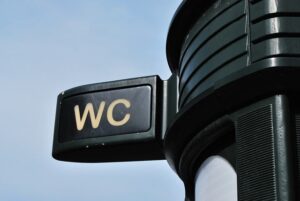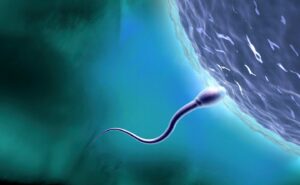As excitement continues to build around Nintendo’s long-rumored follow-up to the massively successful Nintendo Switch, not all fans are celebrating just yet. While the gaming world eagerly awaits new features, improved performance, and more immersive gameplay, a growing segment of the community is holding its breath—not with anticipation, but with concern. The reason? A haunting fear that a familiar, frustrating issue may be making a comeback in the Switch 2.
A Glorious Return… With a Caveat?
The original Nintendo Switch, released in 2017, marked a revolution in gaming. It offered the freedom to play anywhere, anytime, whether docked to a TV or in handheld mode. That hybrid nature was a hit. But as much as the console was praised, it wasn’t without its flaws—chief among them, the dreaded Joy-Con drift.
For years, Joy-Con drift plagued Nintendo fans. This issue caused the thumbsticks on the detachable controllers to register movement even when untouched, leading to countless missteps in Mario Kart and botched jumps in Breath of the Wild. Even more frustrating was how common the problem became, impacting millions and leading to repair programs, lawsuits, and damaged trust.
Now, with more whispers and leaks surrounding the Switch 2, fans are growing anxious. Will Nintendo finally leave Joy-Con drift in the past? Or are they setting the stage for a repeat performance?
What We Know About the Switch 2 (So Far)
Nintendo has remained typically tight-lipped about the Switch 2’s specs and features, but some details have trickled out through credible industry sources and hardware patent filings. The new console is expected to support better graphical fidelity, likely powered by Nvidia’s DLSS technology. There’s also talk of improved battery life, faster load times, and a more robust operating system.
The controllers, though, are stealing the spotlight for a less flattering reason.
Leaked images and insider reports suggest that the Switch 2 will feature new Joy-Con controllers that attach via magnets instead of sliding rails. This change has sparked debate. On one hand, magnetic attachments could feel smoother and more secure. On the other, fans are already worried about wear-and-tear, poor alignment, or accidental detachment—especially in portable mode.
But that’s not the only worry. The real fear? That Joy-Con drift hasn’t been addressed at all.
Déjà Drift: Why Fans Are Concerned
The concern isn’t just about magnets or aesthetics—it’s about what’s inside the Joy-Cons.
While Nintendo hasn’t confirmed what type of thumbstick technology will be used, fans on forums like Reddit and ResetEra have pointed out a worrying possibility: if Nintendo sticks with the same potentiometer-based thumbsticks as in the original Joy-Cons, history may repeat itself.
Potentiometer sticks rely on physical contact to track movement. Over time, this contact can wear down, creating inaccurate readings—a.k.a., drift. Many hoped the Switch 2 would incorporate Hall Effect sensors, which use magnetic fields and are far less prone to wear and drift. Several third-party controllers have already adopted this technology, and it’s quickly becoming the gold standard for longevity and accuracy.
So far, there’s no solid evidence Nintendo is making this upgrade.
A Lesson Nintendo Should’ve Learned
The backlash over Joy-Con drift wasn’t a small blip—it was a global issue. Nintendo faced class-action lawsuits, consumer complaints, and repair costs that could have been avoided. They even began offering free Joy-Con repairs in some regions, a rare admission of fault from the usually tight-lipped company.
With that in mind, many fans assumed that the next generation of hardware would go out of its way to correct this glaring problem. But as new details emerge, it’s starting to feel like those hopes might be misplaced.
“If they release another $300+ console with the same drifting Joy-Cons, I’m out,” one user commented on a popular gaming subreddit. Another added, “They’ve had almost a decade to fix this. If they don’t, it’s just negligence.”
What This Could Mean for Nintendo
Nintendo has always danced to the beat of its own drum. While Sony and Microsoft focus on horsepower, Nintendo leans into innovation, creativity, and family-friendly gaming. That’s part of its charm—and part of why it’s so beloved.
But innovation without reliability can be a dangerous combo.
If Nintendo releases the Switch 2 without addressing long-standing issues like Joy-Con drift, it risks alienating even its most loyal fans. Hardware issues don’t just cost money; they cost goodwill. And with competitors like Valve’s Steam Deck and the upcoming PlayStation handhelds offering solid alternatives, the margin for error is slimmer than ever.
Still Hope for a Drift-Free Future?
Despite the concerns, all hope is not lost. Nintendo still has time to reveal more concrete information—or surprise fans with upgraded, drift-free controllers.
Some optimistic fans believe the company is holding back its best features for a dramatic reveal. If the Switch 2’s Joy-Cons turn out to include Hall Effect sticks, it could not only squash fears but also elevate Nintendo’s reputation for finally listening to feedback.
Until then, caution is in the air.
Final Thoughts
The Nintendo Switch 2 promises a bold step forward in gaming—but fans are right to be cautious. If Nintendo brings back a problem as notorious as Joy-Con drift, it could overshadow even the most exciting advancements.
For a company that’s often praised for creativity and fun, it’s time to show that they can also prioritize durability and long-term quality. Fans don’t just want something new. They want something better.
And with the spotlight on them once again, Nintendo has the opportunity—and the responsibility—to deliver.







